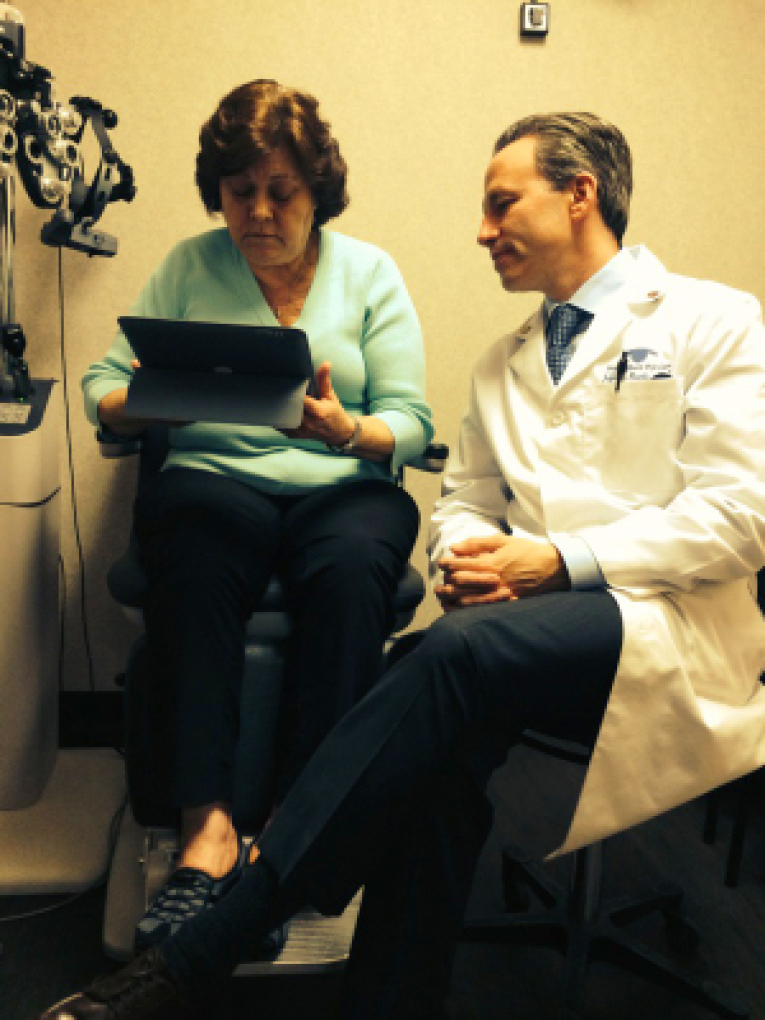Our practice has never taken the approach of acquiring new technology just to be first. However, I do think it’s important to constantly stay abreast of new developments that can benefit our patients. Medicine is changing quickly—and doctors who aren’t willing to change with it can find themselves, in short order, being left behind.
My decision process in evaluating new technology is first to try to separate the marketing hype from reality: Does the device do what the manufacturer purports? Is it clinically superior to what I have now? If there are several different platforms, what are the pros and cons of each? If we invest in this device now, will the manufacturer continue to innovate and improve it going forward? The answers to these questions help me decide whether the device offers a true clinical advantage. Then we only have to figure out if the purchase is a financially viable one. Increasingly, this also means taking into account how our use of the device might be affected by cost containment pressures in health care.
In the past 2 years, we have integrated a number of new technologies, including the Catalys femtosecond laser (Abbott Medical Optics) for laser-assisted cataract surgery (LACS); a new toric IOL platform, the Tecnis Toric (Abbott Medical Optics); ORA intraoperative aberrometry (Alcon WaveTec); and Sight Selector, an iPad-based tool from Patient Education Concepts. Each has played a role in improving patient outcomes to make our practice stronger.

In a high-tech ophthalmic practice, apps like Sight Selector are an indispensable tool for patient education.
Integration Step by Step
The research doesn’t end once you commit to buying a new technology. With the femtosecond laser, for example, we sought out the advice of other users on whether to put our laser inside or outside the operating room and how to most efficiently alternate conventional and laser cases.
A major step in our integration process is to “sell” the new technology to our staff. No matter how convinced I am of the benefits, I know that success is heavily dependent on staff acceptance. Before we brought in the Catalys system, for example, we held an “all hands” dinner at a local restaurant so that staff from all eight of our offices could see what the new technology does, hear about the patient costs and benefits, and learn how to talk about it. This wasn’t the end of the education process, but it was a valuable beginning.
Additionally, I think our hiring practices have had a big impact on our ability to successfully integrate new technology. Rigid, unpleasant people can quickly sabotage big changes, so we make a concerted effort to hire for personality traits—kindness, compassion, and openness to change—and teach the missing technical or practical skills if necessary.
Finally, I will say that when a major new device that alters patient flow is being introduced in the operating room, it is best to embrace the chaos. If you are fully booked and expecting a smooth first day or week, you will likely be very frustrated. It is far better to schedule fewer cases in anticipation of glitches and delays.
Go All-In
If I believe in the clinical benefits of a new technology enough to buy it for our practice, I’m not shy about recommending it to patients. After just a few femtosecond laser cases, I was thoroughly convinced that image-guided LACS would be safer and more precise, that it would reduce the sources of trauma—ultrasound energy and fluid exchange—in cataract surgery, and that it would make astigmatic incisions more predictable. We ramped up quickly, and our LACS procedures already make up 70% of all of our cataract surgeries within just 9 months of acquiring the laser.
This was certainly made easier by the fact that we offer premium IOLs and corneal refractive surgery, so we already had in place the infrastructure to counsel patients and help them afford the procedures. When you are giving patients options that require them to pay out of pocket, it is essential to offer financing. We offer CareCredit 2-year, no-interest financing to just about everyone; it makes it easy for patients to take advantage of the new technology we are telling them is so great.
Of course, not all new technologies have a huge price tag. Adding a new toric IOL to our armamentarium was an easy choice when the Tecnis Toric was introduced because we found that it had excellent rotational stability and is exceedingly quiet in the eye. Plus, it is easy to make clockwise or counterclockwise adjustments.
We have also found that our tablet-based patient education videos and animations have made a huge improvement in patient understanding of complex concepts. Instead of just telling a patient that his or her lens is cloudy and that I’m going to make an incision, I can now quickly show the patient on the iPad in my office. The Sight Selector app has quickly become an indispensable part of patient conversations.
Conclusion
Ultimately, being a high-tech practice is all about being first in patient care. When the decision of which technologies to acquire gets confusing, I try to keep that philosophy at the center of it all.




